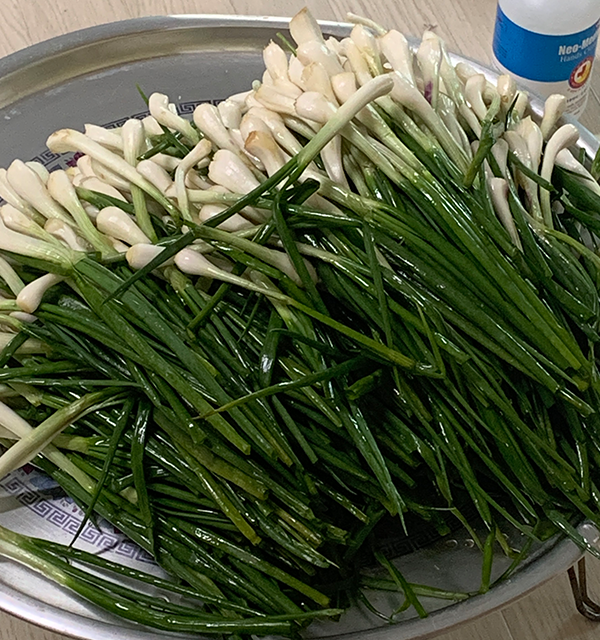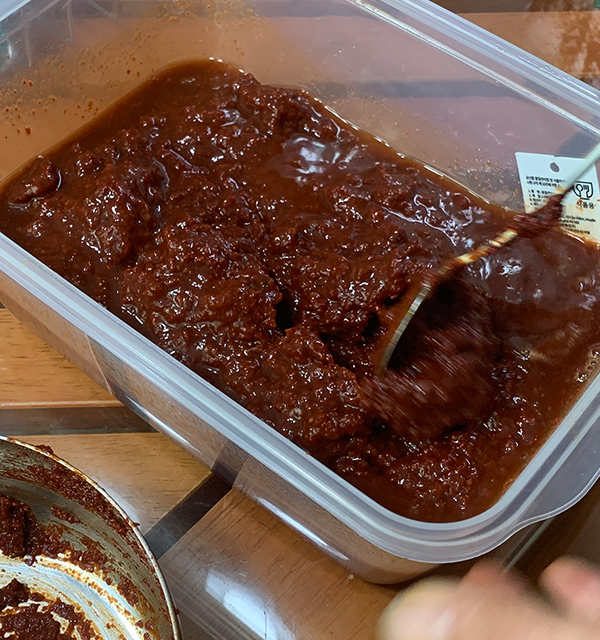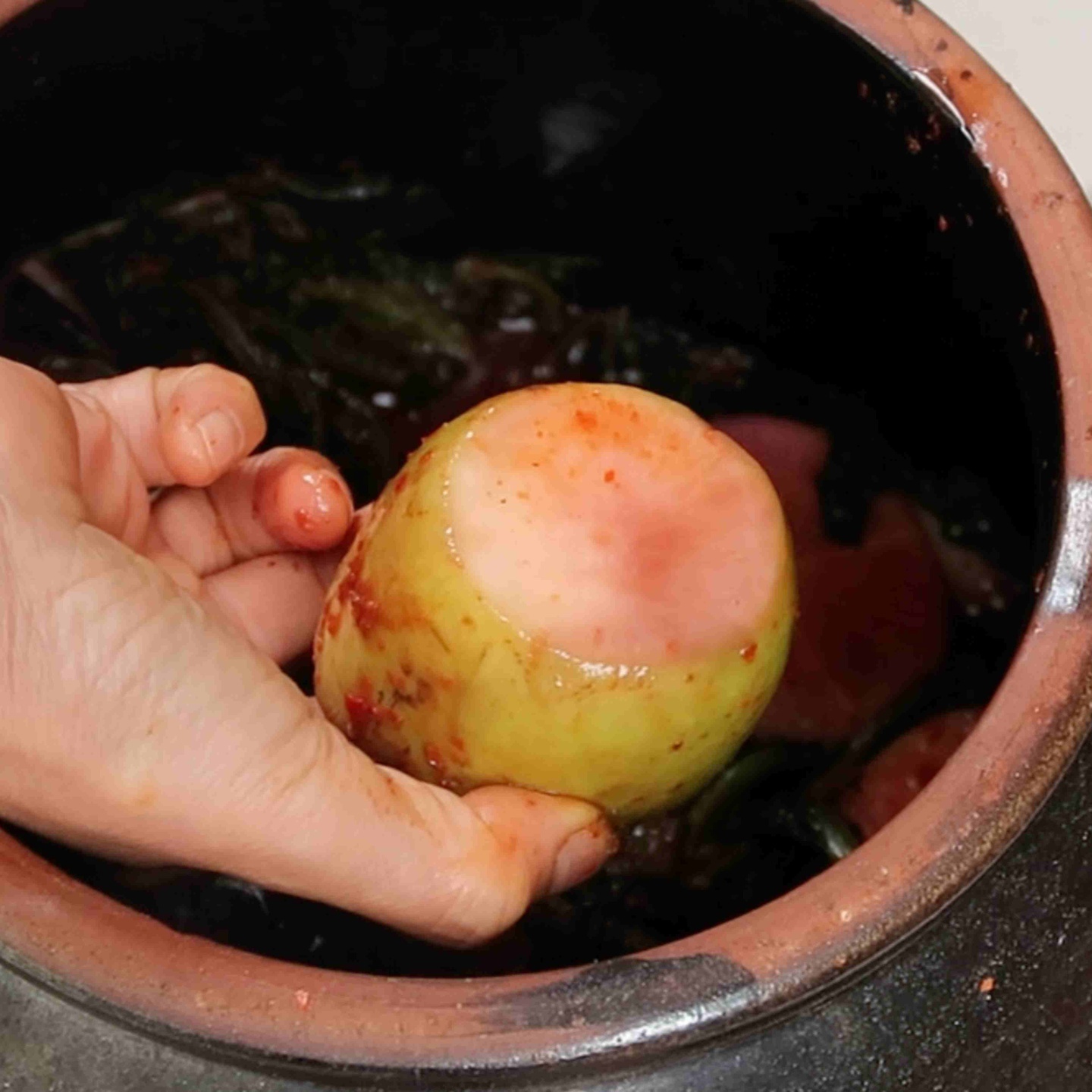The last way to differentiate kimchi is related to the seasoning ingredients used to make your desired kimchi.
Did you know that kimchi does not have to be spicy? Let me intrude you to white/water kimchi. This variety of kimchi is actually one of the first types of kimchi that was made in Korean history. It was made even before the red-pepper based kimchi variety.
What is White Kimchi (백김치) & Water Kimchi (물김치)
White Kimchi (백김치) and Water Kimchi (물김치) are just two different names that refer to the same kind of Kimchi. The term “백김치” is based on Chinese characters and usually refers to white/water Kimchi made with cabbage but not always.
White Kimchi (백김치) and Water Kimchi (물김치) are made by brining a vegetable with salt. When it comes to this kind of kimchi both the salt brine and saltwater brine method can be used based on the vegetable chosen and recipe. The vegetable is then submerged in a seasoned salt liquid and fermented in that liquid. This kimchi does not contain red pepper flakes or a thick paste like other kinds of Kimchi.
Because white/water kimchi has no red pepper flakes, it actually contains more lactic acid bacteria compared to red kimchi which means it has more health benefits. The reason this is the case is because red pepper flakes can actually naturally prevent some bacteria growth.
White/water kimchi can be used in various recipes. It can be used in stir fried dishes, the broth from the kimchi can be added to cold soups, and more. White kimchi can also be made from a variety of vegetables like radish, cabbage, or cucumber
White Kimchi Boost & Fermentation
Here is a reference for when you make white/water kimchi. This will help you to improve the flavor and know the average fermentation timeline. Remember to refer to this next time you try making white/water kimchi.
Boost Fermentation: Some ingredients can be left at room temp before storing to boost fermentation/improve flavor:
- Cabbage: Winter (1 day), Summer (12 hours)
- Radish: Winter (1 day), Summer (12 hours)
- Cucumber: store right away in the fridge after making to ferment in the fridge
- Young Summer Radish: Winter (1 day), Summer (12 hours)
Recommended fermentation timeline:
- Cabbage: let ferment for 7 days, eat within 90 days.
- Radish: let ferment for 10 days, eat within 30 days.
- Cucumber: let ferment 3-4 days, eat within 30 days.
- Young Summer Radish: let ferment for 2-3 days, eat within 30 days.



